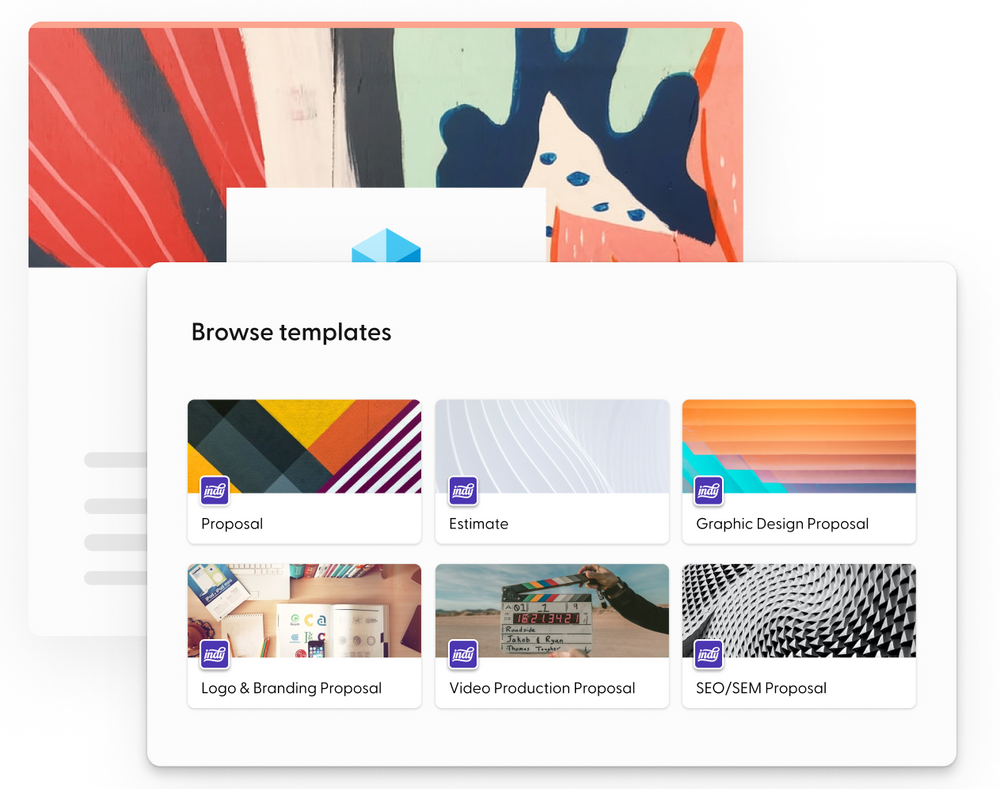Whether you've sent out many invoices previously or are working on your first, knowing how to create an invoice properly is essential. An invoice is a statement that displays the amount of money owed to you by a client after you complete a project or deliver a product or service visit. It specifies what products and services you've provided, how much they cost, when payment is due, and how the client may pay you.
There are several aspects to an invoice, and missing one may make you appear unprofessional. When your client receives a comprehensive, professional-looking invoice, it reflects highly on yourself and your business. Indy is here to help with the day-to-day running of your business. So, in this article, we'll walk you through the process of filling out a professional invoice that will develop trust with your clients and urge them to pay in full and on time.
What Do I Need to Fill Out an Invoice?
Before you begin writing your invoice, there are several things you must consider and do.
Gather necessary information
Before you begin creating an invoice, the first step is to gather all the necessary information. This includes your business information and your client's information (such as business names, addresses, your name, client's name, and contact details for both). You will also need the invoice number and date.
Understand invoicing requirements and legal obligations
The second step is to understand the requirements and legal obligations. This includes tax regulations and invoice format and content.
The IRS requirements for invoicing includes:
- Your business name and address
- Client's name and address
- Invoice number
- Invoice date
- Payment terms and date
- Description of the services or products delivered
- Quantity of services or products (this includes hours worked)
- Amount due (in USD)
- Sales tax (if applicable)
Each state has the ability to determine its own taxation policies. Consider both state and federal laws while determining how to create an invoice.
Essential Elements of an Invoice Template
Now that we have covered the requirements of an invoice, let's take a look at the different elements and what information must be included.
Header
The header goes at the top of the invoice document and includes your business logo, business contact information, and your client's contact information.
Include your business address, phone number, and email address just below your business name. This allows clients to simply contact you if they have questions or issues. Directly underneath, include your client's name and contact information. This ensures that the invoice will be delivered to the correct person.
Invoice details
This section goes directly underneath your header, and includes the invoice number and date, payment options and terms (preferred payment method such as PayPal, bank transfer, cash, online payments, etc.) and payment due date, and purchase order number (if applicable).
Invoice number is an individual number assigned to each invoice. A client will use this number when making a payment, and it helps you and the client keep track of what this payment was for.
Here are four tips to create a unique invoice number.
- Number your invoices sequentially (for example, INV001, INV002)
- Start with a unique customer code (for example, ART001)
- Include the date at the start (for example, 2023-05-001)
- Combine the customer code and invoice date (for example, ART-2023-05-001)
Itemized list of goods and services rendered
These are also known as line items. A line item is a detailed description of each service and/or product provided, along with the associated expenses.
For example, if you're a freelance writer, services could include "2000-word SEO article." Whether you are providing one service or product, or a bundle, each item must be listed.
Add quantities to a column beside each line item to reflect the amount of materials, labor hours, or other units you're pricing for. Make sure to include the hourly rate and the subtotal if you are tracking time to be paid hourly.
Calculation of total amount
This section is the subtotal of all costs associated with the project. This includes the subtotal of costs listed in the above section, and any taxes and additional charges (if applicable). Record the total amount owing on a separate line in bold.
Tips for Filling Out an Invoice Correctly
Writing invoices can be stressful, especially if you are a new small business owner and creating one for the first time. Here are a few tips to help with your invoicing process.
1. Use a clear and consistent format
There's nothing worse than an overfilled document with no clear format. Make sure all of the information is in its correct place, and all sections are clearly labeled and well structured. Additionally, to guarantee clear communication with clients and other departments, keep your numbering system, format, and descriptions consistent.
2. Double check accuracy and spelling
Be sure to proofread and edit your invoice carefully. This will help to ensure it is free of errors and makes a good impression on your clients.
3. Ensure all necessary information is included
As noted in the first section, it's best to gather all necessary information before you begin writing your invoice. Make sure all information is included and in the correct section.
4. Consider using invoice templates
Invoice templates allow you to create and structure your invoices only once, then fill them out and reuse them in seconds. All you have to do is upload your document, add and save your formatting, and you're finished. You'll have already done the difficult lifting the next time you need to issue an invoice.
5. Save a copy for your records
Invoices serve as evidence of payment requests and are critical components of guaranteeing timely payments and keeping accounts up to date. Create a system for recording, preserving, and protecting financial records.
Sending and Following Up on Invoices
The final step is to send the invoice to your client. There are several delivery methods, including:
If you are dealing with clients directly, and not through a third-party platform such as UpWork, email is the fastest and safest way to send an invoice. It's a good idea to attach a short, accompanying email with your invoice. Then you can upload your invoice as a PDF, ensuring that vital information is neither altered nor modified by whoever receives it.
Create a clear subject line in your email that includes your company name and the word 'invoice' so there is no doubt about who is sending the email or what it is for. Then, briefly describe the services you provided.
Online invoicing platforms
You may be using a third-party platform such as UpWork, in which case invoices are often generated and stored automatically. In other cases, you may decide to use an online invoicing platform to create and send invoices directly to clients.
One example is Indy! Our online invoice software can take the hassle out of invoicing, with a generator that produces simple invoice templates in seconds. Our invoice tools also make it easy to send professional invoices at set intervals—perfect for freelancers with recurring clients.
Set up a follow-up system for unpaid invoices
If a client hasn't paid on an invoice after one week, send a friendly payment reminder. If it doesn't work, send another reminder in two weeks, then one month later. Make it clear how late the invoice is and invite them to contact you if they have any questions or concerns.
How Indy Can Help with Invoicing
Here at Indy, we aim to make freelancing simple. Free invoice software can create and send invoices in minutes. By creating a free account, you can view your previous invoices through your dashboard and create new invoices. All you need to do is follow the step-by-step instructions, add the information listed above, and send directly to your client through Indy. Additionally, we offer a variety of invoice templates for any project to help you save time and get paid faster!
Here are some other ways Indy can help:
- Our Time Tracker tracks your hours for you. If you are billing customers based on hourly rate, Indy's time tracking widget shows you how many hours have been billed, or still need to be billed, and can be filtered to your projects for easy timekeeping.
- Our Calendar tool allows you to easily schedule meetings, track time, and see your deadlines. It also syncs with your Google Calendar, so you can keep up to date with everything!
With Indy, you can manage all of your business tasks, create contracts, send invoices, and safely store important files all in one place! Sign up today and try for yourself.
Conclusion
A detailed invoice reflects well on your small business and builds client trust. The most important component of your invoice design is that it allows your client to quickly receive all of the information they need to make a payment arrangement. The importance of readability cannot be overstated. Consider making a simple grid for your itemized list, with separate columns for each piece of information. Color may assist in making the most important information stand out from the grid.
For additional guidance on writing agreements to make invoicing simpler, check out our guide on How to Write a Scope of Work for Any Project.




